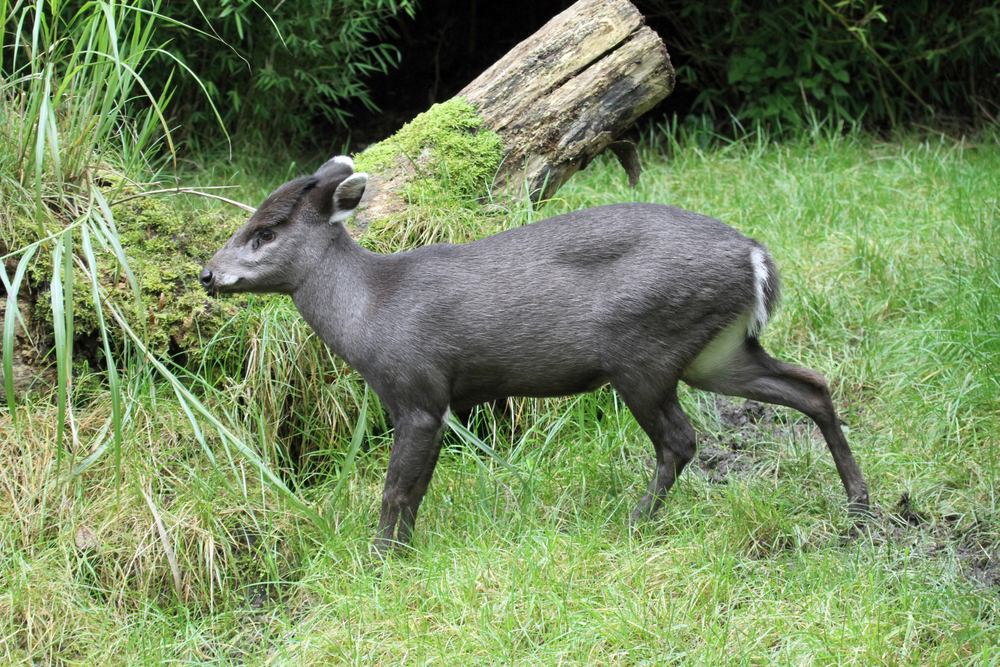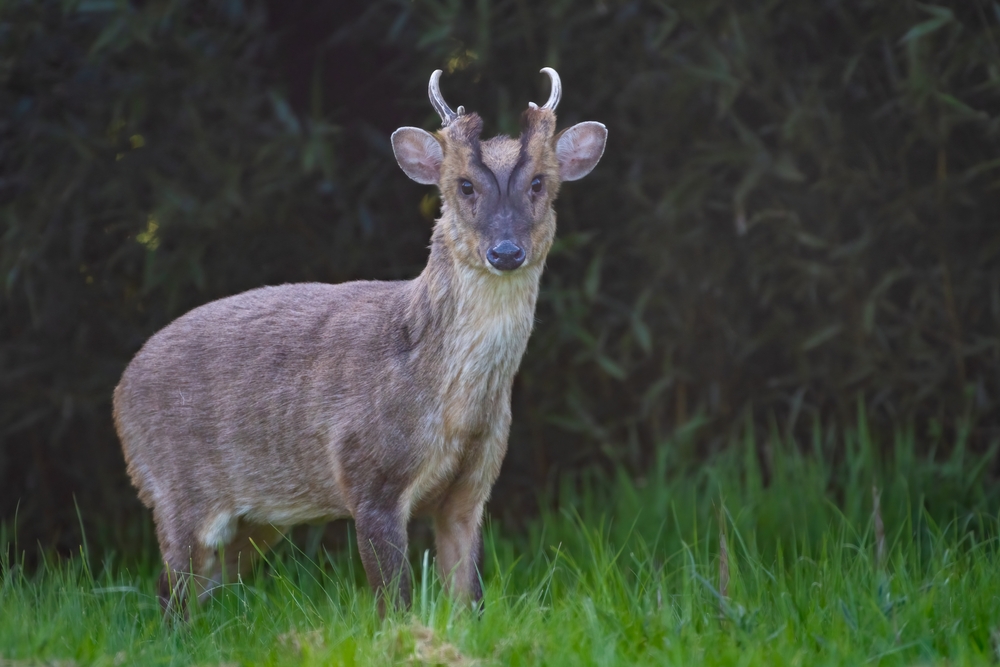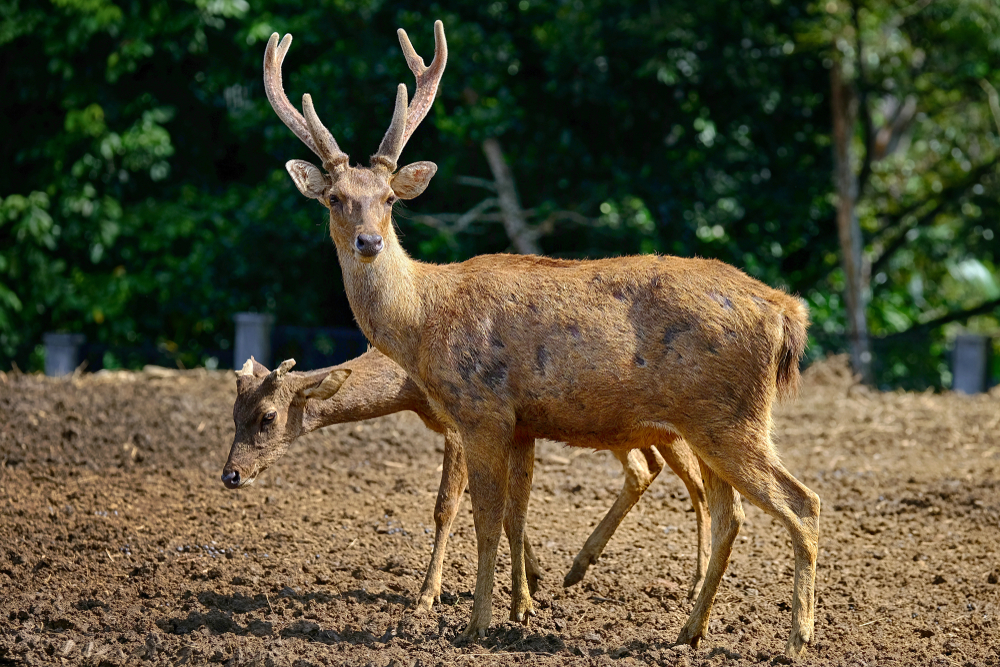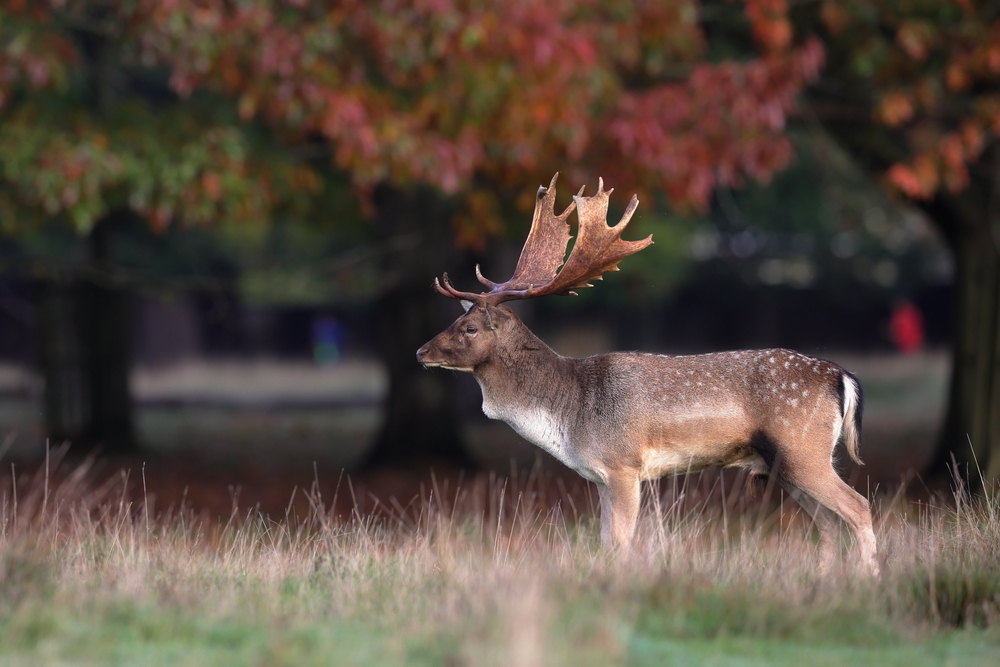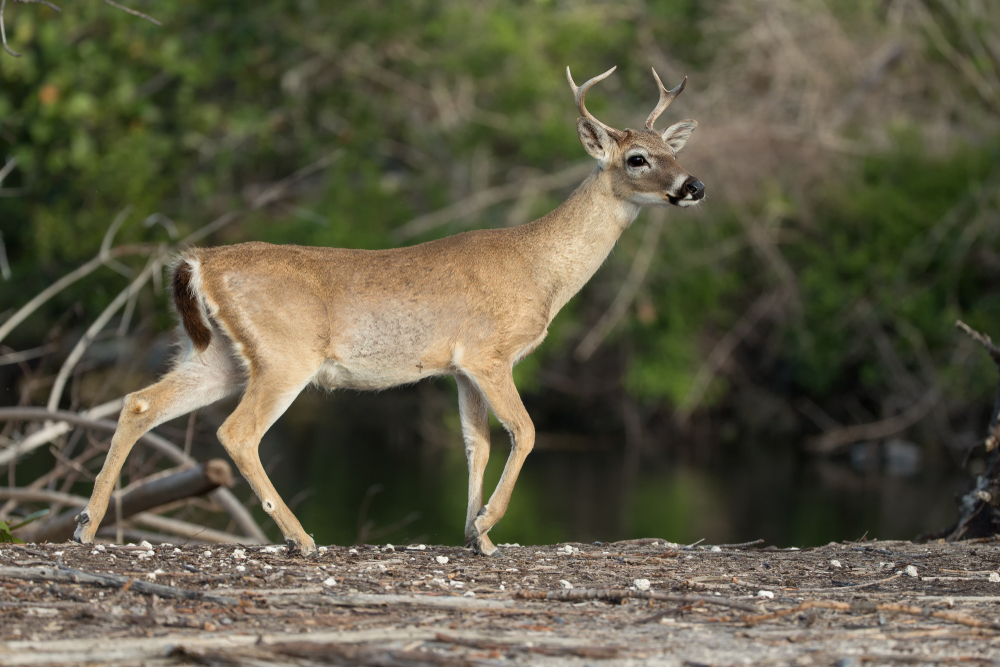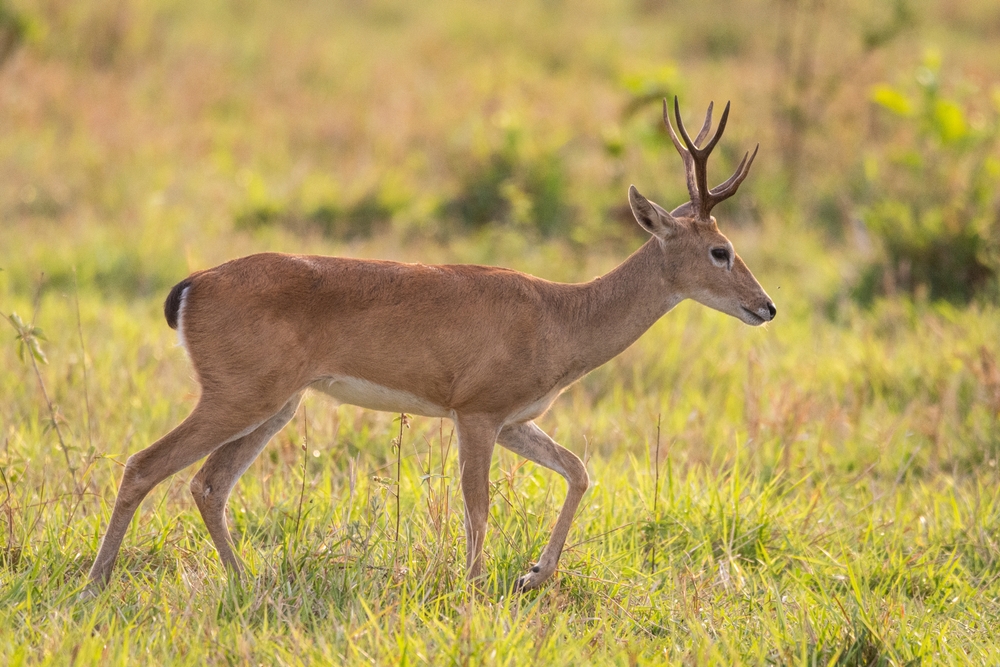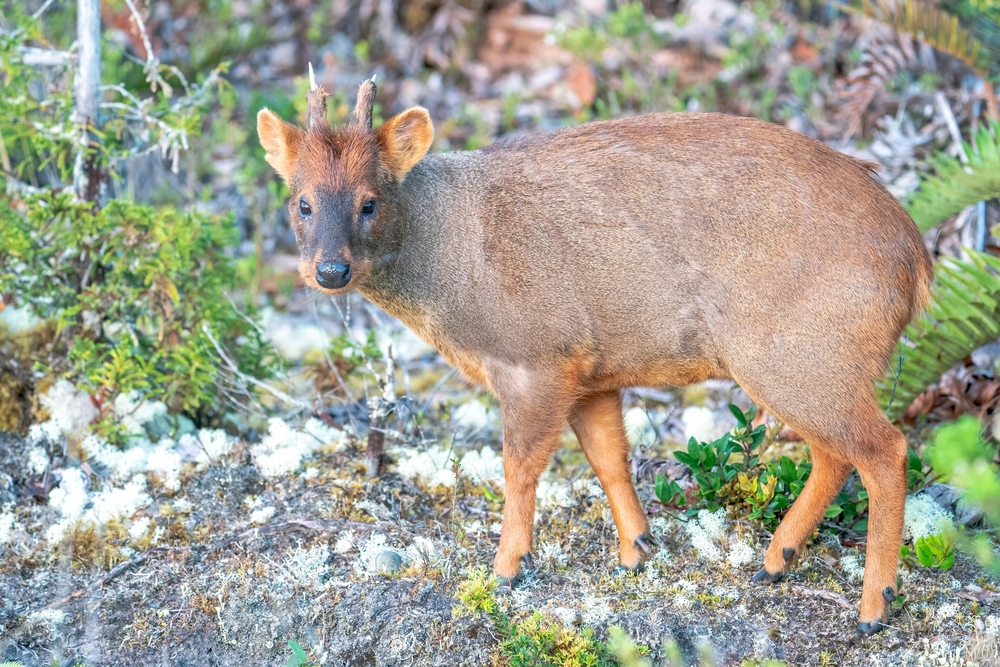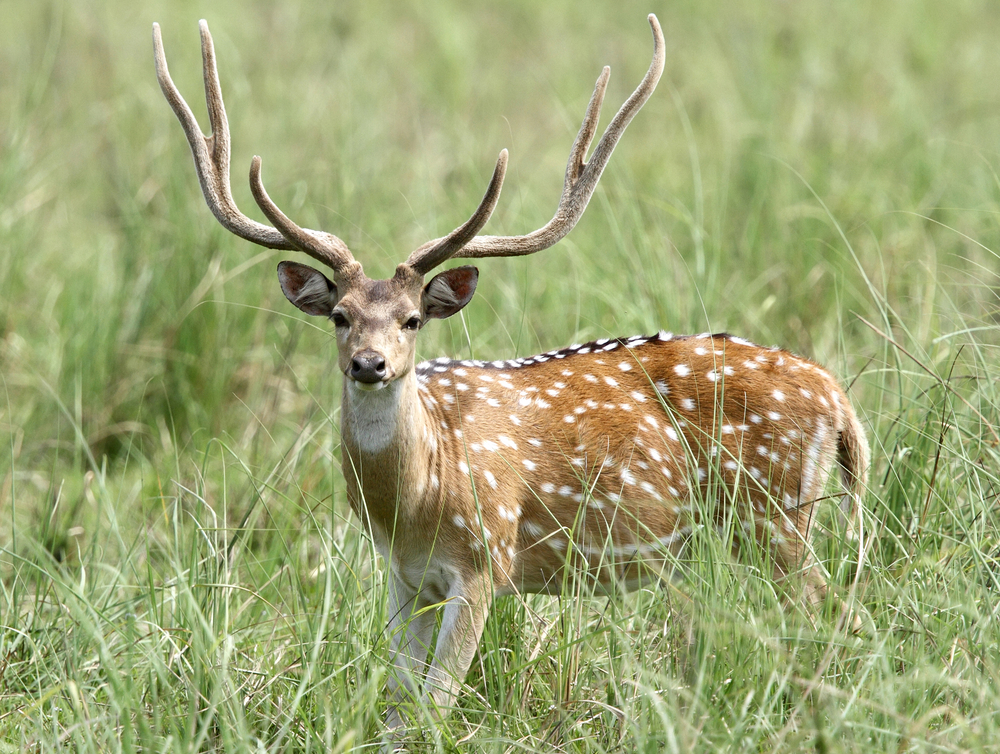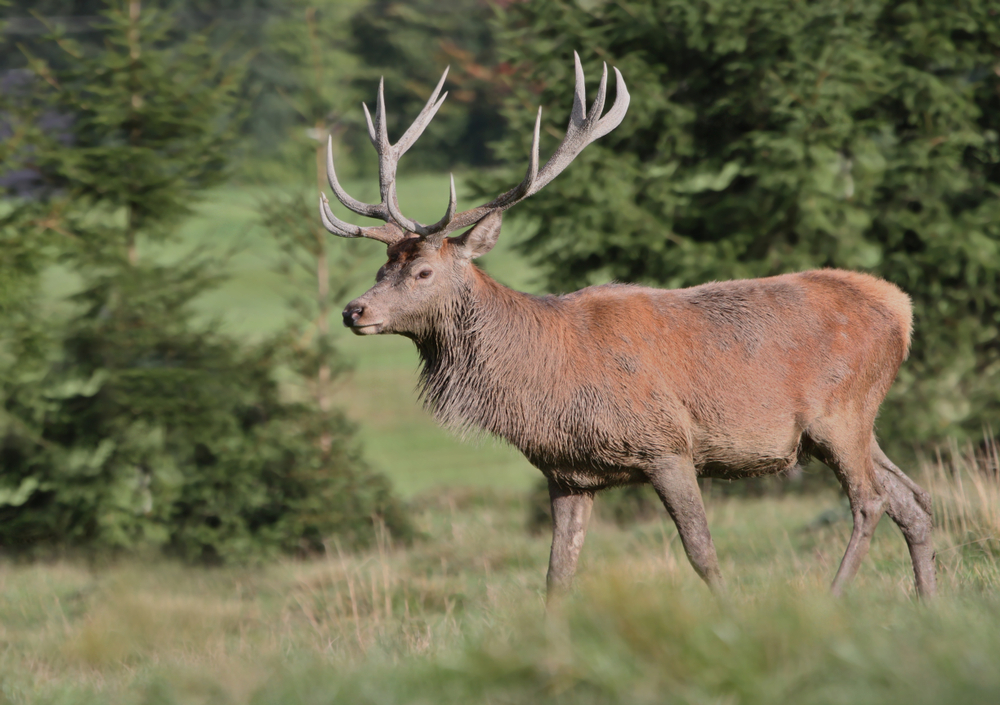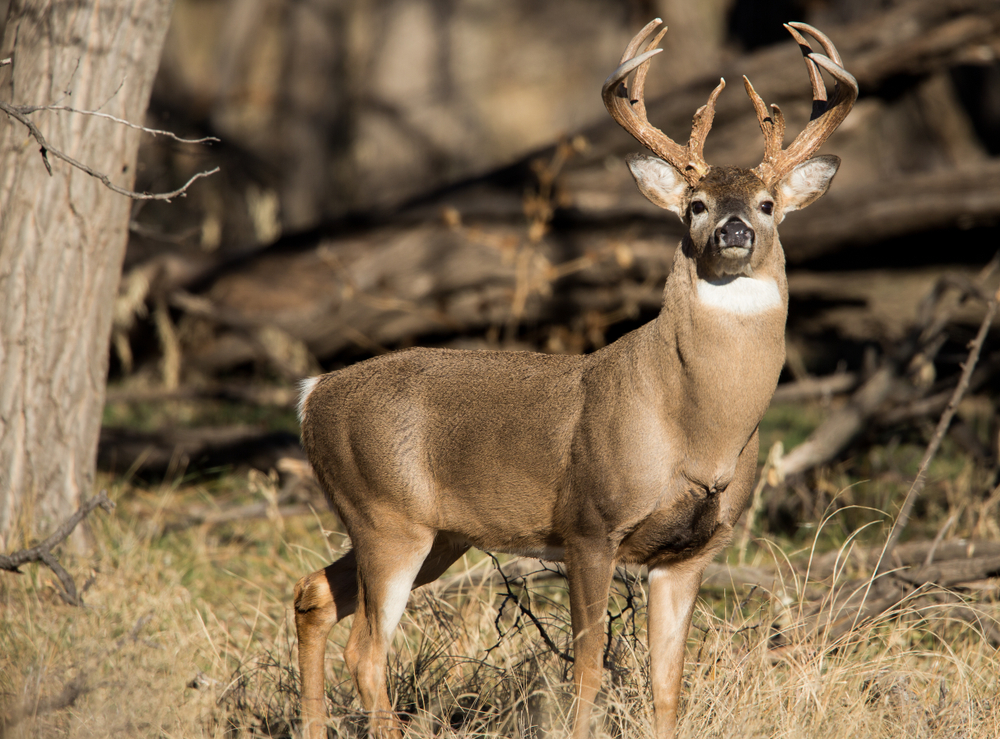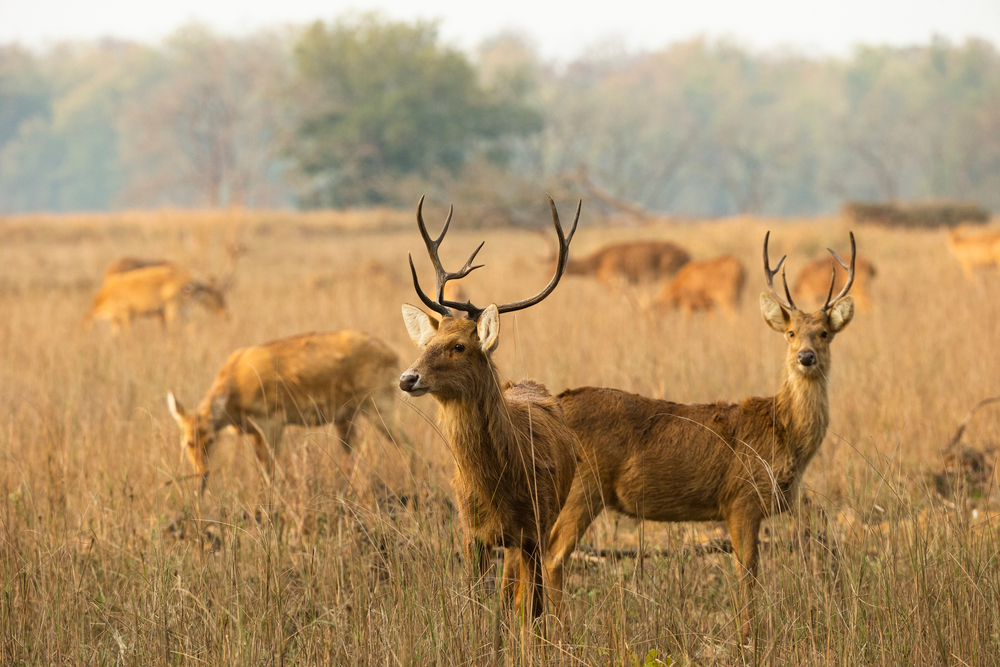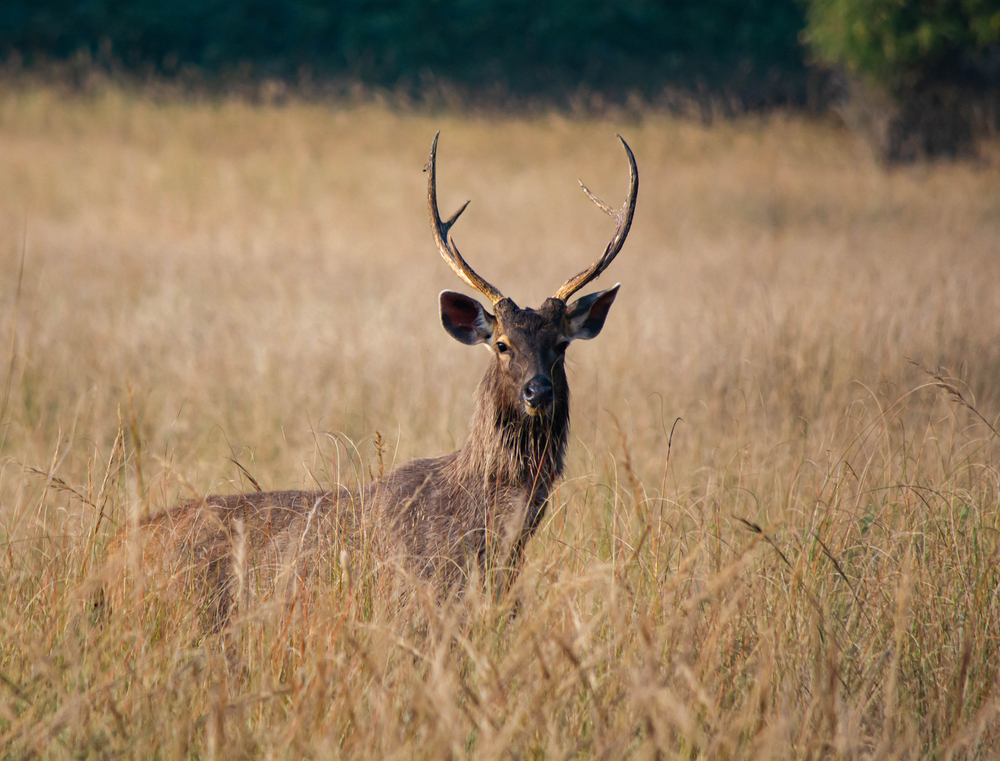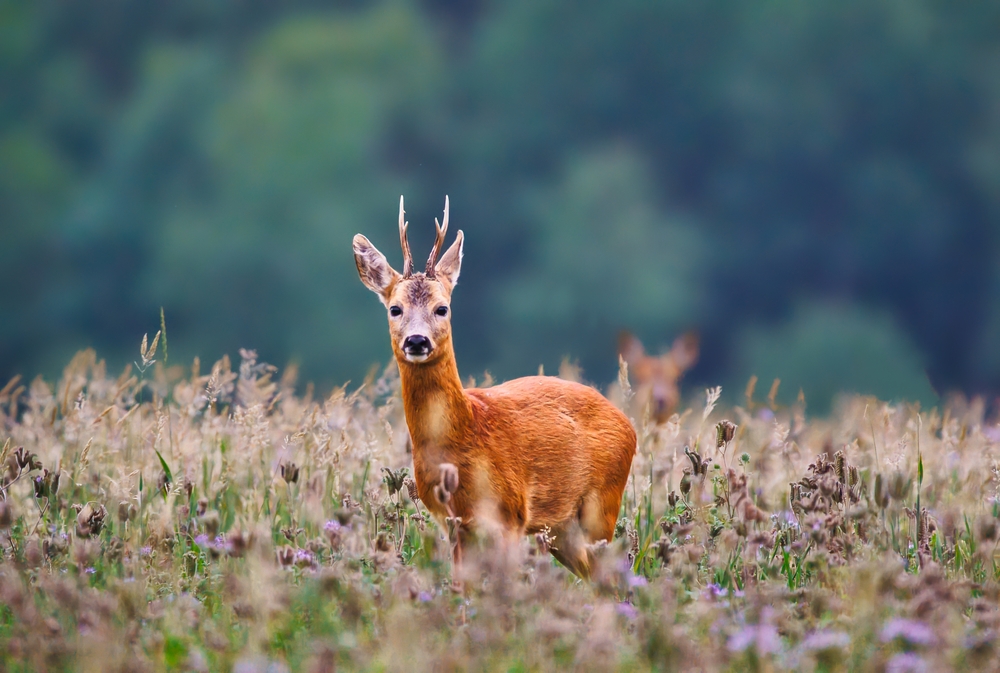About
#Mammals
The tufted deer (Elaphodus cephalophus) is a small, secretive forest deer native to central and southeastern China and northeastern Myanmar. It belongs to the Cervidae family and is easily recognized by its peculiar appearance—most notably, a prominent tuft of dark hair on its forehead and the fang-like upper canines that protrude from the mouths of males. This striking combination gives the tufted deer a unique, almost mythical look among deer species.
Tufted deer typically stand 50–70 cm (20–28 inches) at the shoulder and weigh between 17 and 30 kg (37–66 pounds). Their coat is coarse and dark brown, with lighter underparts, and their namesake forehead tuft can be quite pronounced. Males lack antlers—unlike most deer species—but have long, sharp upper canines used in territorial disputes and mating competitions.
These deer inhabit steep, mountainous forests with dense understory and bamboo groves, usually at elevations ranging from 500 to 4,500 meters (1,600 to 14,700 feet). They are solitary and crepuscular, emerging at dawn or dusk to feed on leaves, twigs, fruits, and shoots. Their shy nature and preference for rugged terrain make them rarely seen in the wild.
Tufted deer are territorial and mark their range with scent glands. When threatened, they emit a short, barking alarm call, similar to that of the muntjac. Despite their reclusive habits, they have adapted well to remote, hilly environments.
The species is currently listed as Near Threatened by the IUCN due to habitat degradation, hunting for meat and traditional medicine, and increasing human disturbance. Conservation efforts are focused on protecting forest habitats and curbing illegal hunting within protected reserves in China.
Threatened:
Extinct
Critically Endangered
Endangered
Vulnerable
Near Threatened
Least Concern



































































